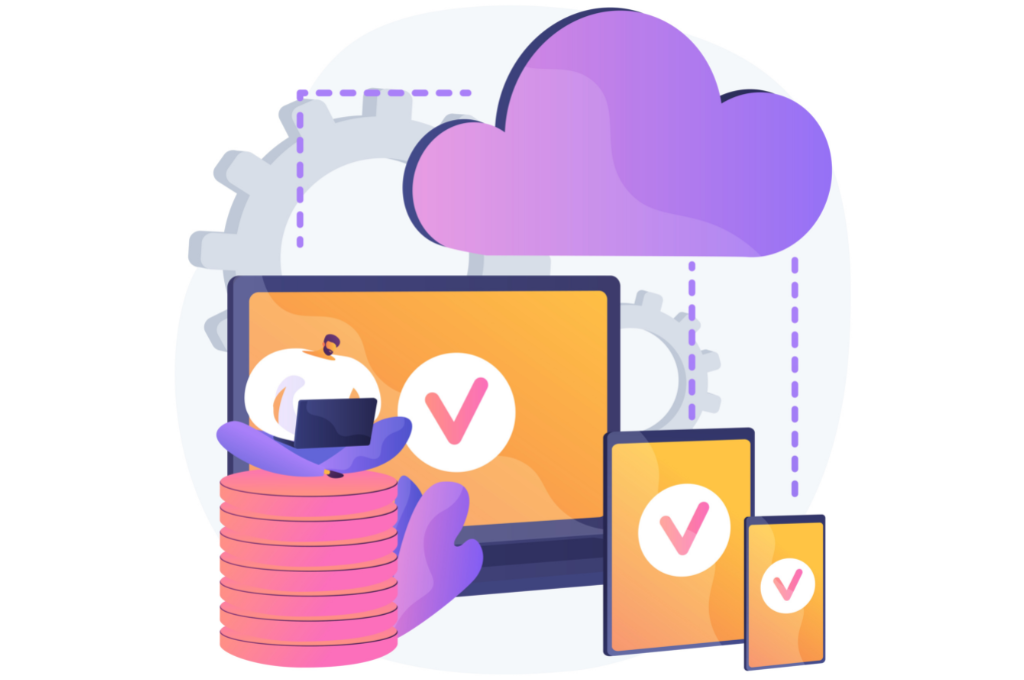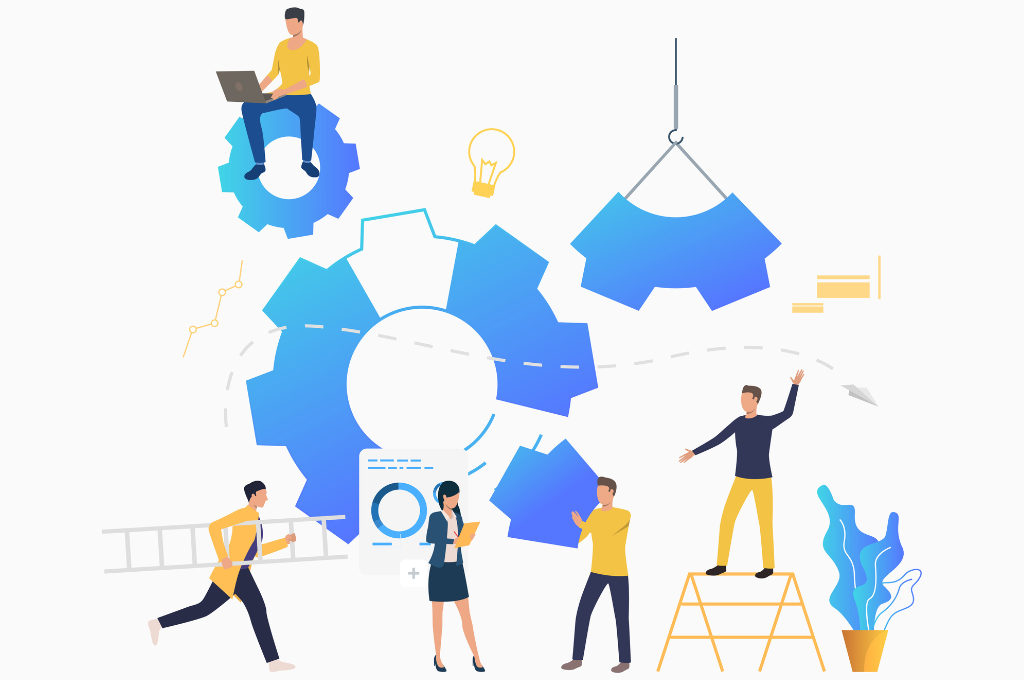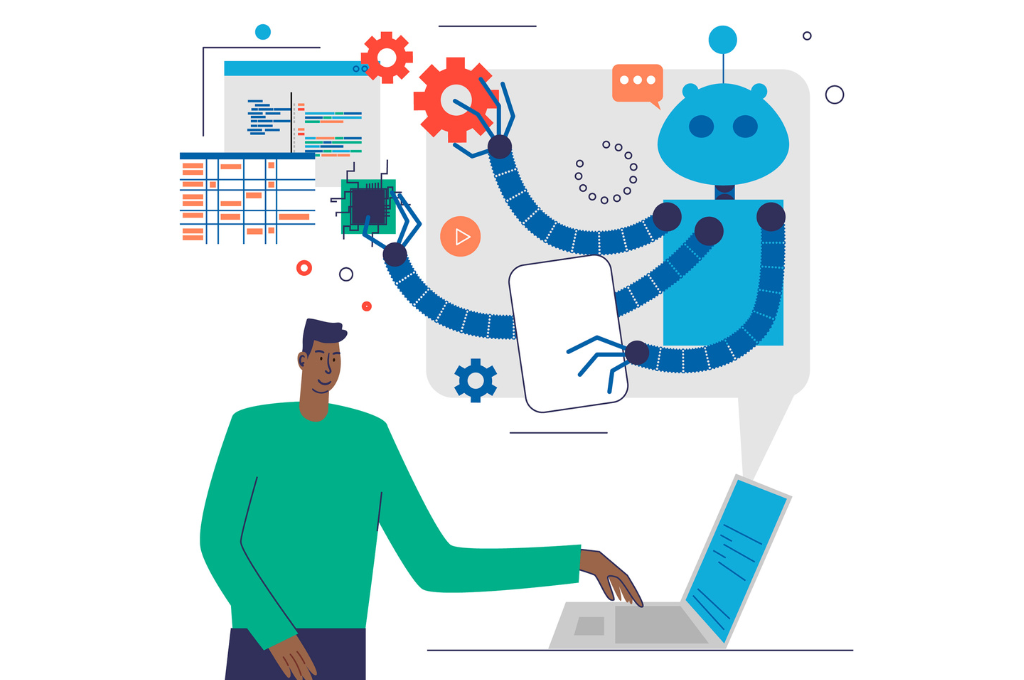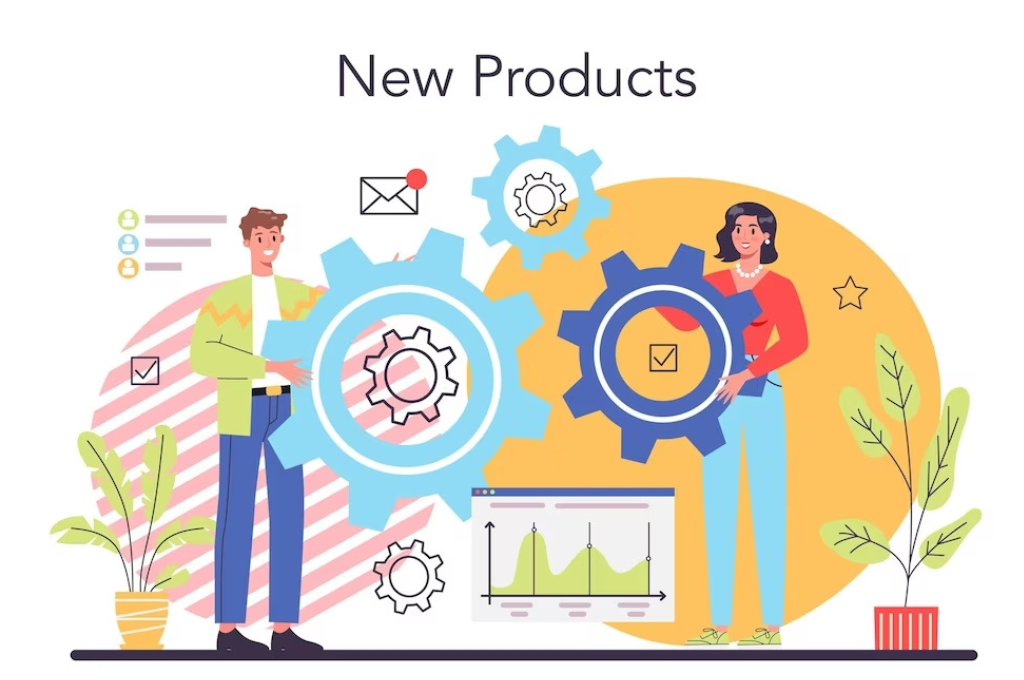Imagine if we lived in times preceding Slack or Gmail. How painstakingly difficult it would’ve been for organizations to hold any type of communication.
Either they would’ve invested a lot of time, effort, and resources to create their own communication tool. Or they would’ve spent hundreds of thousands of dollars just to buy the communication software for each employee, excluding ServiceNow development services.
Thank God we live in times like the present. Times where we can simply subscribe to cloud-based software as a service and access it simply over the internet.
Today, organizations of all scales are using the software as a service to speed-up their business processes. Whether it is communication/ remote working tools like Slack or virtual mail tools, CRM software like Hubspot, social media management software like Buffer, productivity tool like Toggl, or any other process, there’s a SaaS application making things easier for them. No wonder the global SaaS market is predicted to experience a CAGR of 25.89% and touch USD 720.44 Billion by 2028.
Also Read: SaaS Product Development: The Complete Guide
If you also want to clutch some benefits from this booming industry, here is how you can start with getting SaaS application development. But before we get started with the SaaS development lifecycle, let’s first talk a little more about SaaS products.
What Is A SaaS Product?
Before delving into the details of the SaaS development lifecycle, we need to understand what software as a service means and how it is different from any traditional software product.
Investopedia defines SaaS (Software-as-a-Service) as - A software licensing model in which access to the software is provided on a subscription basis, with the software being located on external servers rather than on servers located in-house.
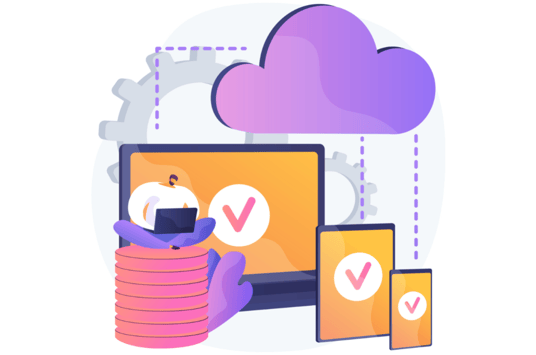
This type of application is a cloud-based model wherein all the maintenance, updates, security analysis, and more are performed by the vendor or the SaaS product owners. Those using the SaaS product pay monthly, annual, or other timely subscription fees to avail of the software services.
Typically accessed via web browsers, the provider hosts SaaS products either on their servers, computing resources, databases, or on a third-party cloud by an Internet Service Provider. As they are generally hosted on the cloud, users can access them over the internet via mobile or web browsers. You don’t need any physical media or custom installation to use SaaS products.
Stages In SaaS Development Lifecycle
There are different stages when it comes to building a SaaS product. Like the traditional software development process or SDLC, the SaaS development lifecycle also comprises certain stages. We have bifurcated these into three- the planning stage, the selection/subscription stage, and the development stage.
The Planning Stage
This type of application is a cloud-based model wherein all the maintenance, updates, security analysis, and more are performed by the vendor or the SaaS product owners. Those using the SaaS product pay monthly, annual, or other timely subscription fees to avail of the software services.
#1. Envisioning
The first step of the planning phase is to envision the product. You have the product idea but you need to envision it as well. This is where you are simply researching the opportunities. It is similar to envisioning any other product. You need to set up the scope of your SaaS software product. The scale of your project, business perspective, target market, and other things should also be mentioned within the scope of this step.
#2. Researching
Whether you are building simple software or getting SaaS product development, research is one of the most crucial steps. Not only do you need to research your product idea, but the main research should also revolve around your target customers, the competitors, and the market. You need to know your target market and customers inside out to define common traits for building your SaaS product features.
#3. Evaluation
Once you have envisioned your SaaS product, it is crucial that you evaluate your SaaS product idea before getting started. The most important aspect of evaluation would be to analyze the different cloud providers. You need to evaluate and assess all aspects of product idea and make the critical decisions that will affect the SaaS product once it is implemented.
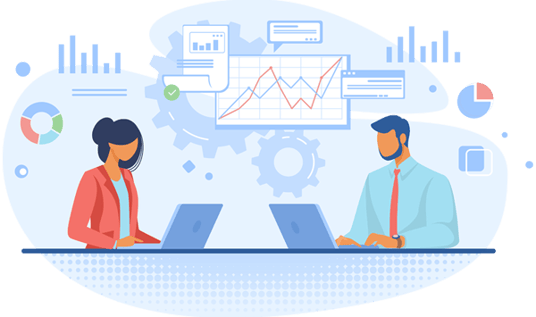
#4. Defining Requirements
The next important step is to define the SaaS product requirements. You need to define your product in terms of multi-tenancy architecture, self-service provisioning, security, and user activity monitoring for your SaaS product.
Let's take an example of building a money transfer app. The planning stage might look like this:
- Envisioning: Define the scope (target a global market or a specific region). Determine revenue models (transaction fees or subscriptions). Identify your target market (expatriates or small businesses). Consider regulatory requirements and compliance for different countries.
- Researching: Conduct thorough research on the money transfer industry, focusing on user needs like transfer speed, cost-effectiveness, ease of use, and reliability to identify market gaps your app can fill.
- Evaluation: Assess cloud providers for scalability, security, and cost-effectiveness. Make technical decisions on compliance with financial regulations and data encryption.
- Defining Requirements: Specify technical needs like multi-tenancy, strong encryption, real-time transaction tracking, and self-service provisioning for user account management.
By following these steps, you can effectively plan and develop a robust money transfer app tailored to meet market demands and provide a seamless user experience.
The Selecting/Subscription Stage
Once you have envisioned, researched, and evaluated your SaaS product idea, it’s time you start with the selection or subscription stage. This is the stage where you make the most crucial choices in the SaaS development lifecycle.
#1. Selecting the Cloud Provider
The first selection that you need to make here is to select the cloud provider. This would be a huge part of your SaaS product. This will determine which cloud provider hosts your SaaS product. You need to assess the discoverability, scalability, reachability, economic feasibility, supportability, and other aspects of the cloud. You need to assess the cloud provider’s platform capabilities along with the tweaks in architecture that they can offer.
In order to select the cloud provider, there are certain things that you need to factor in:
- Draft the technical architecture of your SaaS product
- Define your proof points
- Analyze the cloud platform in accordance with technical architecture
- Shortlist the platform vendors accordingly
- Finalize the platform and start with the implementation and designing
There are various reliable cloud providers like Amazon AWS, Google Cloud, Microsoft Azure, and more from which you can choose the right one.
Also Read: Hiring Remote Developers For Your SaaS Development
#2. Selecting Development Methodology
The next important thing to select is the development methodology for development. There are different methodologies that you can select for your SaaS development lifecycle. Before initiating the SaaS development process, you need to select the methodology to set the pace of development. Some of the popular development methodologies that you can choose from are:
-
Agile: One of the most popular methodologies is the agile software development methodology. Allows iterations, changes, and improvements. It is sprint-based development. Works great if you are working with remote teams or developers. You can also iterate your product based on the SaaS trends, in case they change.
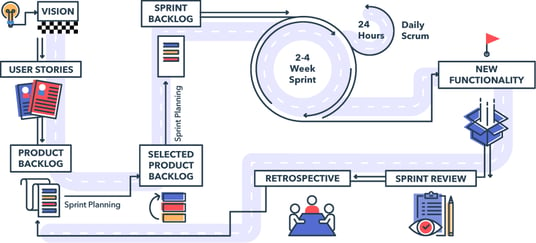
-
Waterfall: This is one of the most consistent methodologies. However, you cannot move to the next step until the previous one has been tested and completed.
-
Scrum: A way of agile software development that is more focused on sprint latency and retrospectives.
-
Spiral: This is a development cycle where each of the development phases is like a cycle, and an evaluation of one stage is done which then influences the next cycle.
#3. Selecting Technology Stack
The next and very crucial selection that you need to make for your SaaS development lifecycle is the technology stack that you choose. The technology stack that you choose determines the ease in the development environment. It also ensures how optimal the SaaS software ecosystem would be.
There are several SaaS frameworks and yyou need to structure a class diagram, select the front-end technology, back-end technology, database, and even the new-age tech that you want to integrate into your software. It could be Artificial Intelligence, Blockchain, Machine Learning, the Internet of Things, or any other new technology to enable digital innovation of your product.
#4. Selecting Your Delivery Model & Pricing
The next important selection to make for your product is to select the delivery model as well as the SaaS pricing. You need to be sure what type of subscription you want to offer or the type of delivery model you aim to create with your SaaS product. So, you need to select the subscription-based pricing model that you would like to offer to your customers. Some of the common subscription models you can select from are:
-
Freemium Pricing Model: One of the most popular SaaS subscription models is Freemium or some ad-supporting model. It gives Free usage to customers for a limited amount of time and asks them to get the paid version after that. This is a great way to attract more paid subscriptions.
-
Fixed Fee Model: This is another model where the SaaS product company charges the same fees from all its users irrespective of the usage or users they want to add.
-
Tiered Model: This is the subscription model that offers flexibility in the product offerings. It is a common model that lets customers level up and unlocks more features as they start seeing benefits. SaaS product owners should offer obvious benefits in such a scenario to upsell to the existing customers.
-
Usage-based Model: This is a common model that insists customers pay as per the services they use. This offers the customization that many customers need and adds transparency.
-
Per-user Model: Another popular subscription model of delivery for SaaS could be the per-user model. Customers can ask for a quote based on the number of users they are targeting. This is especially a great model for those offering the SaaS product for internal functionalities.
-
Feature-based Model: This is a great SaaS subscription of the delivery model for all those whose SaaS software is packed with countless impressive features. It is somewhat similar to the tiered model and offers pricing based on features the customers want.
These are some of the popular subscription models offered by top SaaS companies. You can assess your product, features planned, users allowed, and more to determine the subscription model. Many companies also make a hybrid of different models to offer better customization.
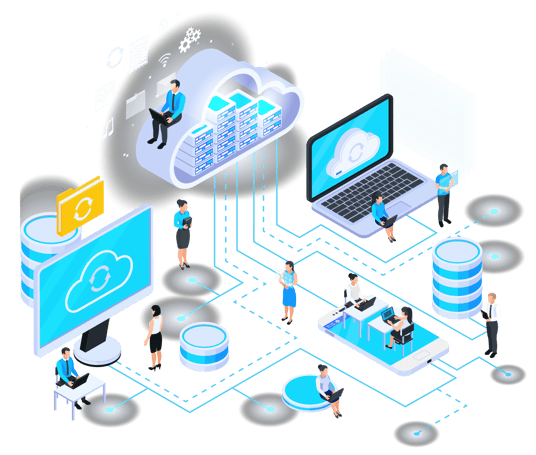
Take Netflix, for example. It offers subscription-based on the number of users (per-user based) as well as device compatibility (feature-based). You can also decide on a similar subscription model before starting the SaaS development process. You also need to select whether you will be building a multi-tenancy or single-tenancy product, which will further define the product architecture.
#5. Selecting Monetization Strategy
Every business seeks to monetize its product idea. And defining the revenue strategy before getting started with the development can ease the entire process. You need to know if your revenue would be through subscriptions, advertisements, or offering a Freemium model. You can even add a transaction-based fee system if you are creating a marketplace.
The Development Stage
One of the most critical and time-consuming stages in the SaaS development lifecycle is the development stage. In this stage, you are required to set up the development environment and start small with your SaaS product.
Here are the major steps involved in the development process.
#1. Build Your Development Team
SaaS application development requires many months to complete along with a dedicated team of experts. So, the first step toward building any SaaS product is to set up your software-as-a-service team. An ideal SaaS development team would comprise a project manager, business analyst, UI/UX designer, backend developer, front-end developer, QA engineer, product manager, and more. You can either build your in-house team or hire remote developers from an agency to get your SaaS product built. You can even build a dedicated team for your SaaS application development. Another cost-efficient and time-saving solution for your SaaS application are to outsource it to experts.
#2. Build The MVP
Once you have the team ready, the first step in the SaaS development lifecycle would be building the minimum viable product or the MVP. This is where you build the first version of your product. It is the first step in your development. This will help assess the idea, test on people, capture feedback, and analyze the business monetization strategy. This will also help save money in case your SaaS idea doesn’t work out. MVP development can also save on costs.
Also Read: Complete Guide To MVP Development
#3. Test on Early Adopters
Once your MVP is developed, the next step is to test the prototype. You need to launch your product among the beta testers or the early adopters. You need to collect feedback from them and course-correct accordingly.
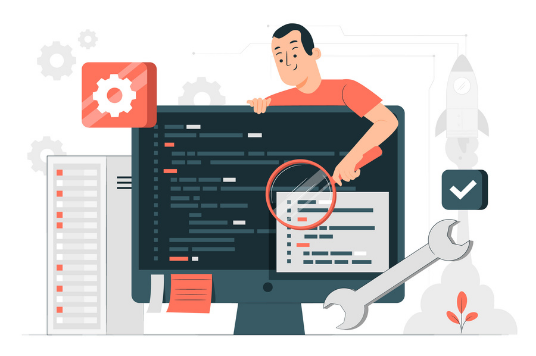
#4. Iterate And Launch
Once you have collected the feedback, you can start with the next sprint and build the product as per the reviews. You can add more features, enhance the experience, and deliver a more polished version of the product. You make use of the selected working methodologies, toolsets, tech stack, and more. You can also integrate APIs into your SaaS product to enhance its features and even optimize it before launch.
#5. Manage, Monitor, & Optimize
Once you have deployed, launched, and tested your SaaS application, you should move forward to managing, monitoring, and optimizing your product. This means ensuring the SaaS product is fully updated and maintained. You also need to monitor the software continuously to ensure your software has everything that’s required to run it flawlessly. They need to manage the servers, databases, and other things to ensure it is accurate for the user base.
These are the steps that you will have to take when you are in the development stage of your SaaS product. And once you have launched your product, the next thing is to keep scaling it. This would include adding new features, monitoring it, API integrations for product enhancement, and more.
On An Ending Note
Building a SaaS product is certainly a great business move if you have a great idea and want to clutch benefits from the booming industry. But as discussed above, the process can be quite complex with a lot of stages and steps.
To simplify the same, you can join hands with a SaaS application development company like Classic Informatics. We have the experience and expertise required to build a powerful, world-class SaaS application. We can help build the right development team to take your SaaS product idea to new heights.
Over the past 20 years, we have delivered several functioning SaaS products to businesses in industries like logistics, government, and more. You can simply share your idea with us and we will get provide you with pre-vetted engineers, designers, managers, and more to build your product.


















